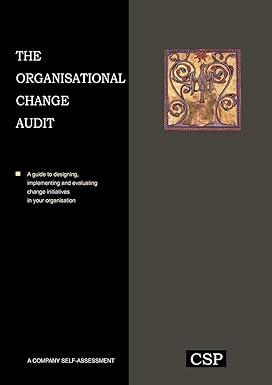Question
A close corporation is a legal entity, which implies that it is not liable to pay for obligations and can acquire assets in its own
A close corporation is a legal entity, which implies that it is not liable to pay for obligations and can acquire assets in its own name.
Select one:
True
False
Question 15
A Close corporation must comply with specific liquidity and solvency requirements whenever certain payments, such as the distribution of total comprehensive income are to be made?
Select one:
True
False
Question 16
Which one of the following alternatives is correct?
A. A close corporation is taxed separately from its members only during its last year of operation.
B. A close corporation is not taxed separately from its members as members are liable for the entitys tax in their individual capacity based on the balance of individual loans they owe to the entity.
C. A close corporation is taxed separately from its members.
D. A close corporation is taxed 50% of the profits separately from its members and the other half is taxed directly on the members in their personal capacity
Question 17
Which one of the following alternatives is incorrect?
A. A close corporation may give financial assistance to a person to acquire an interest in the close corporation.
B. A close corporation can enter into contracts and cannot be sued as a legal person in its own right.
C.
A close corporation can have up to ten natural persons as members.
D. A close corporation continues to exist under its registered name irrespective of a change in its membership.
Question 18
Which one of the following alternatives is correct journal entry to record income tax expense for a close corporation?
A. Debit Bank asset and Credit SARS (income tax) liability
B. Credit Income tax expense profit or loss and Debit SARS (income tax) liability
C. Debit Income tax expense profit or loss and Credit SARS (income tax) liability
D. Credit Bank asset and Debit SARS (income tax) liability
Question 19
Which of the following journal entries is correct for recording the provision of distribution of total comprehensive income to members of a Close Corporation?
A. Debit Bank; Credit- Distribution to members
B. Debit- Distribution to Members; Credit- Distribution to Members payable
C. Debit Distribution to members payable; Credit - Distribution to Members
D. Debit - Distribution to Members; Credit- Retained earnings
Question 20
Profit companies are incorporated for the financial gain of the shareholders without restricting the transfer of ownership.
Select one:
True
False
Question 21
Non-profit companies are incorporated for public benefit. All assets and liabilities must be applied to advance this objective.
Select one:
True
False
Question 22
The premium or discount which arises from the debenture issue must be allocated to the statement of profit or loss and other comprehensive income over the period of the debenture issue.
Select one:
True
False
Question 23
Which one of the following alternatives is the incorrect abbreviation regarding different forms of companies?
A. State-owned company SOE Ltd
B. Non-profit company Inc
C. Private company (Pty) Ltd
D. Public company Ltd
Question 24
Which one of the following alternatives is correct in regarding to recording the transaction for receiving share applications and money from the public?
A. The bank account must be debited with the amount received and a temporary application and allotment account is credited
B. The bank account must be debited with the amount received and a temporary application and allotment account is credited to the extent of the shares offered to the public
C. The bank account must be credited with the amount received and a temporary application and allotment account is debited
D. The bank account must be debited with the amount received and a temporary application and allotment account is credited with the value of the shares issued
Question 25
If a company has declared an interim dividend, the interim dividend and the final dividend together form the annual dividend. If an interim dividend was not declared, the final dividend is referred to as the annual dividend.
Select one:
True
False
Step by Step Solution
There are 3 Steps involved in it
Step: 1

Get Instant Access to Expert-Tailored Solutions
See step-by-step solutions with expert insights and AI powered tools for academic success
Step: 2

Step: 3

Ace Your Homework with AI
Get the answers you need in no time with our AI-driven, step-by-step assistance
Get Started


